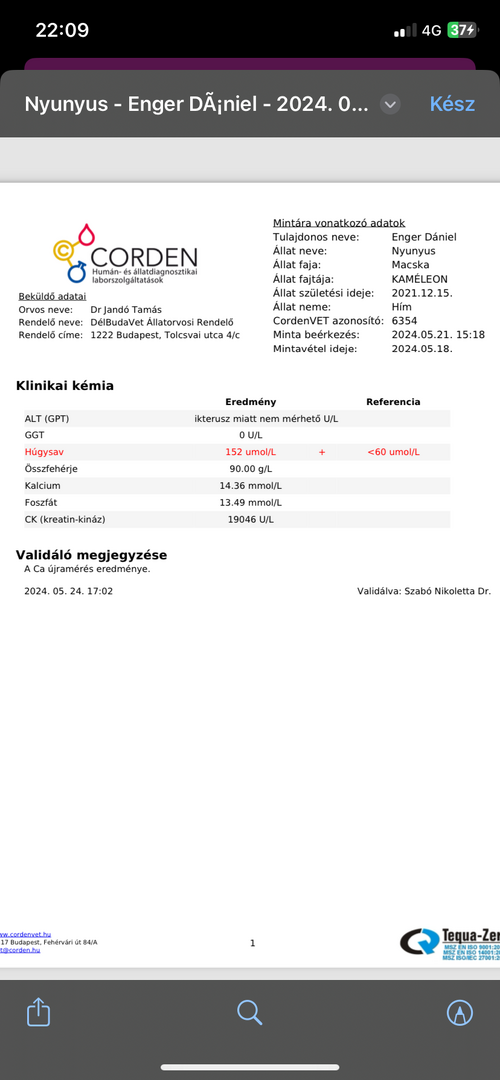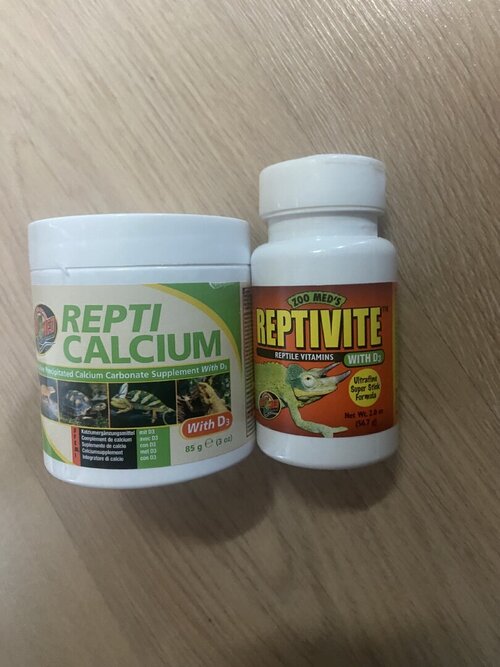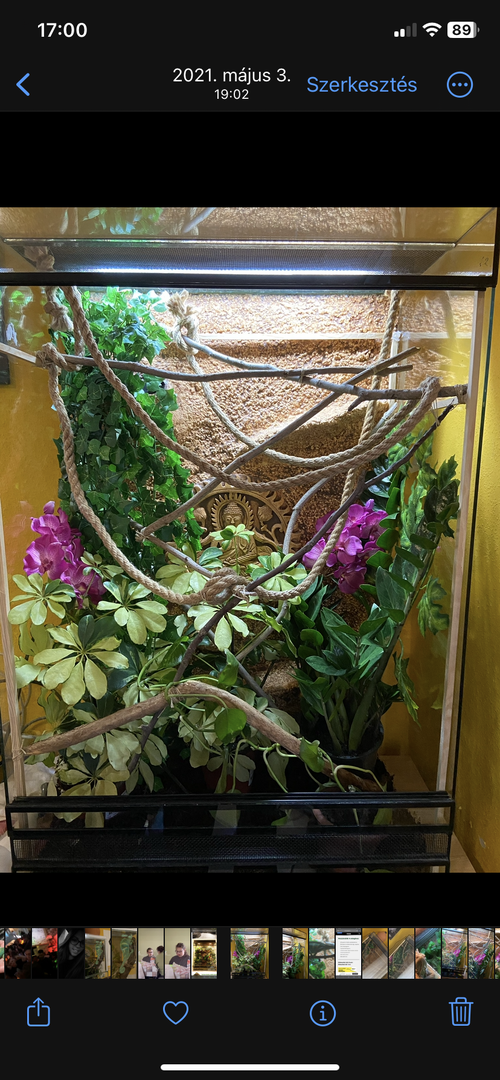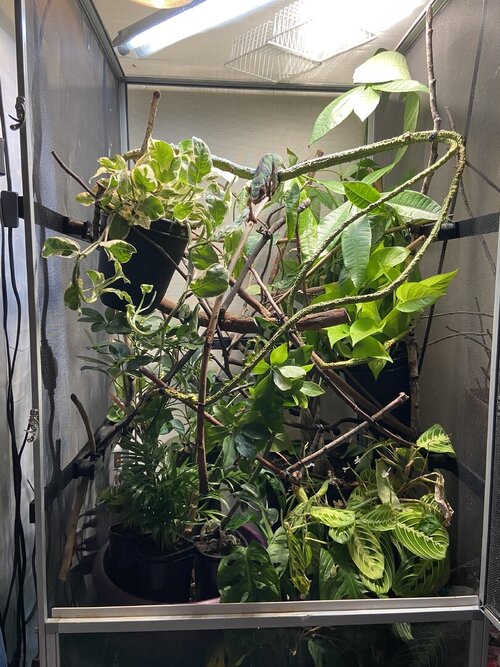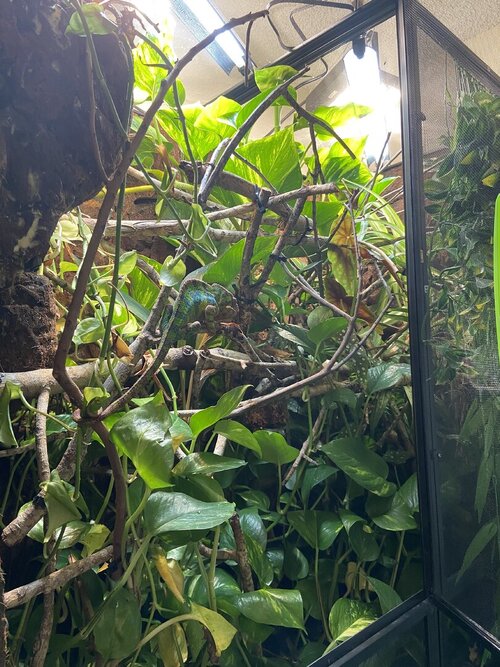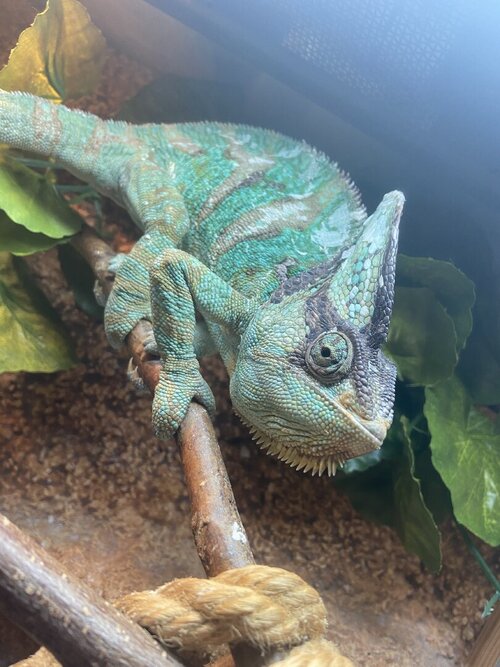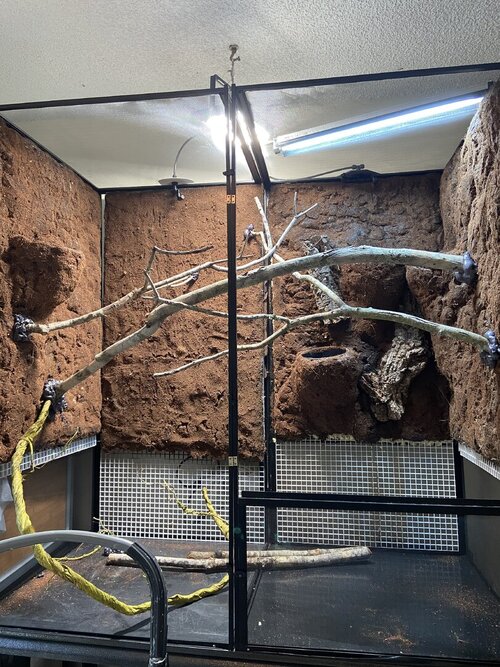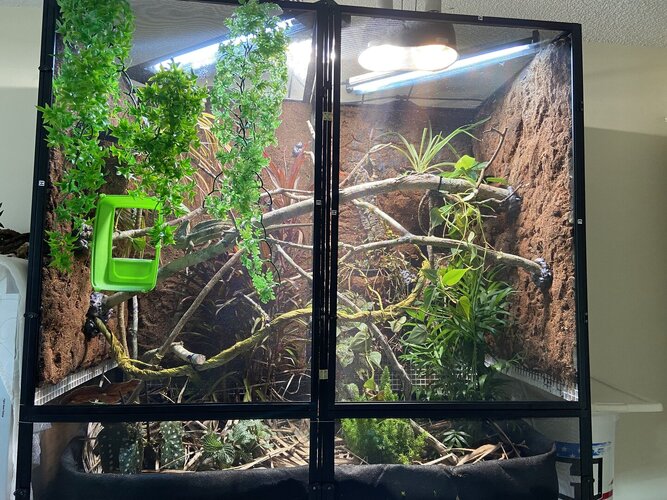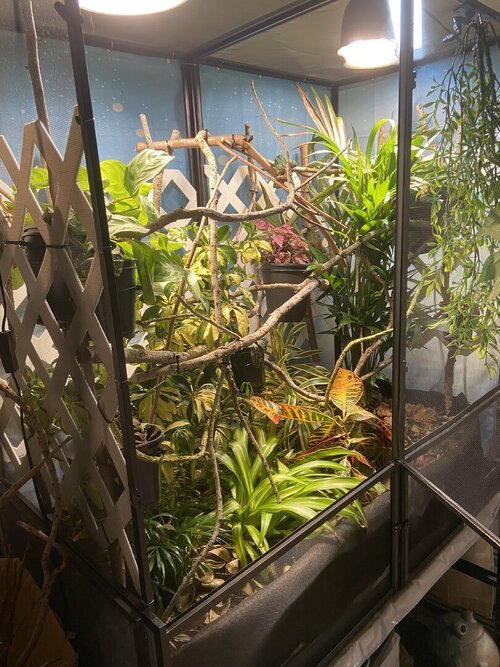harsza15
New Member
Hi everyone! First of all, sorry for my English. I live in Hungary and only speak a little English. I have a 3.5-year-old veiled chameleon. One month ago, I noticed that he wasn't shooting his tongue at his food. I took him to the vet, and they did a blood test. They said his phosphorus was slightly high and his calcium was low. But we caught it in time... We got phosphorus-restraining fluid and liquid calcium. These ran out and his condition started to deteriorate. He developed lockjaw and spasms. I took him to another vet, and they wanted to euthanize him because they said he had Zenker's necrosis. I didn't allow it, brought him home, and now I'm trying to treat him at home. Externally, he looks beautiful, is interested in his environment, and has a strong grip. Please help! 

